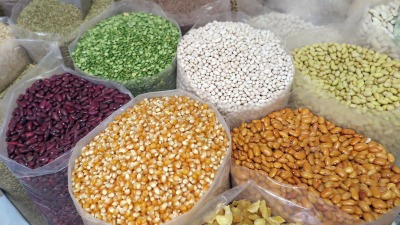The plant seed is an organ found in plant shoot, attached to the stem, and originating from a flower.
It is a structure that is formed by the maturation of the ovule within the ovary of the angiosperms.
It is often described as a “mature ovule”.
In angiospermous plants, the natural process of seed development occurs through double fertilization.
This proceeds after pollination, the transfer of pollen grains from an anther to the stigma of a flower.
In double fertilization, one of the two sperm nuclei (1N) in the germinating pollen (pollen tube) unites with the egg nucleus (1N) in the female gametophyte or embryo sac within the ovule to form the diploid (2N) embryo of the seed.
The other sperm nucleus (1N) in the pollen tube unites with the polar nuclei (2N) in the embryo sac to form the triploid (3N) endosperm.
Meanwhile, the surrounding integuments of the ovule form the seed coat (2N).
To complete the process, the ovary which encloses the ovule develops into a fruit.
As a result, the plant seed consists of a diploid embryo, a triploid endosperm, and a diploid seed covering.
The seed or seeds which develop from the same flower are enveloped by a fruit.

Uses of Seeds to Man
Seeds have multiple uses to man.
Examples are as a source of food (e.g. cereals, grain legumes, seed vegetables), beverages (e.g. coffee, cacao, coconut water), and spices (e.g. anise, nutmeg, mustard, sesame).
Many seeds also provide raw materials for the industrial processing of various products such as vegetable oil, starch, biofuel, lubricants, and fiber.
Cereal seeds are rich in carbohydrates; legume seeds contain more protein than the seeds of other plant types.
There are seeds also that are rich in oil such as castor beans, jatropha, and sunflower.
The seeds of the desert shrub jojoba (Simmondsia Chinensis) contain a wax that is used as a substitute for sperm whale oil in the production of lotions, shampoos, other cosmetic products, and even machine oil (Postlethwait and Hopson 1989).
Main Functions of Plant Seeds
The primary function of seeds is reproduction in which plants perpetuate themselves, mainly sexually.
This has been exploited in the deliberate production of seedlings known as plant propagation.
Further, seeds help in the development of fruits.
For example, the parts of the fruits of jackfruit, soursop, and durian with less number of fully developed seeds tend to be depressed.
In addition, this organ also serves as a diaspore or dispersal unit of many plants.
Many seeds are equipped with adaptations that ensure or enhance dispersals such as dust-like and balloon seeds, wing-like appendages, hairs, parachutes, feathers and hooks, and water-repellant surfaces.
The Exception to the Natural Process of Seed Formation
The development of the plant seed follows pollination, the transfer of pollen from the anther to the stigma, and double fertilization.
Double fertilization is a unique process in which two fertilizations occur, one leading to the formation of a diploid embryo and another which is responsible for the triploid endosperm.
But in apomixis, the seed is developed without fertilization and the resulting embryo is of maternal origin.
Consequently, the plant that is propagated from apomictic seed possesses the gene constitution that dictates the characteristics of the parent plant from which the seed is sourced just like in asexual or vegetative propagation.
This is the reason why Gregor Mendel failed to duplicate his results on garden pea.
He wanted to show that his observations also apply to other plants but, unfortunately, he chose hawkweed (Hieracium sp.) which is an apomict, or apomictic species.
Apomixis occurs mostly in three plant families: Poaceae or Gramineae (grass family), Rosaceae (rose family), and Asteraceae (sunflower family).
Apomictic crops include the Citrus species, mangosteen (Garcinia mangostana), lanzones (Lansium domesticum), and blackberries (Rubus fruticosus).
More Variations in Plant Seeds
Angiosperms or flowering plants have seeds enclosed within fruits, as contrasted to the gymnosperms in which seeds lie exposed on the cone or similar structures.
The term angiosperm in fact means “covered seeds” or “enclosed seeds.”
Seeds vary in size, form, shape, texture, color, and chemical composition.
Size varies from the extremely small, dust-like seeds of orchids to the giant seeds of the palm Seychelles nut or coco de mer or double coconut (Lodoicea maldivica).
The smallest seeds that are found in orchids can be 0.11 mm long, each weighing less than 0.5 μm.
In contrast, the largest seed, which belongs to the Seychelles nut (actually a one-seeded fruit), can be 50 cm long and weigh up to 20 kg but takes 7-10 years to mature (Kesseler and Stuppy 2009).
Plant seeds can also be classified as longevity and germination based on their tolerance to drying or desiccation and low-temperature storage.
Orthodox seeds are tolerant to both drying and low temperature while recalcitrant seeds are sensitive.
Those which can be dried to minimal levels of moisture content without significant adverse effect on germination but are sensitive to low-temperature storage are called intermediate seeds.
